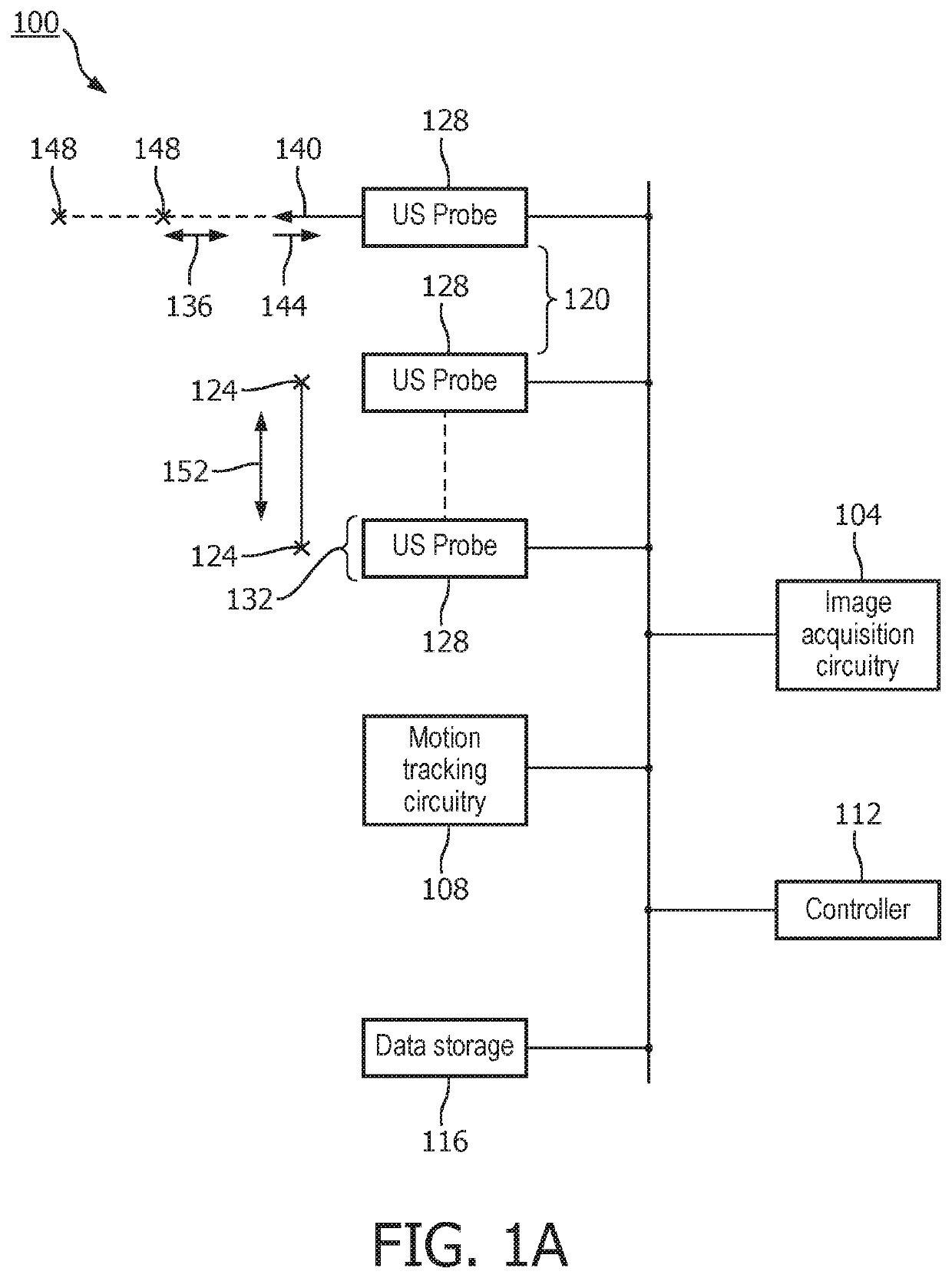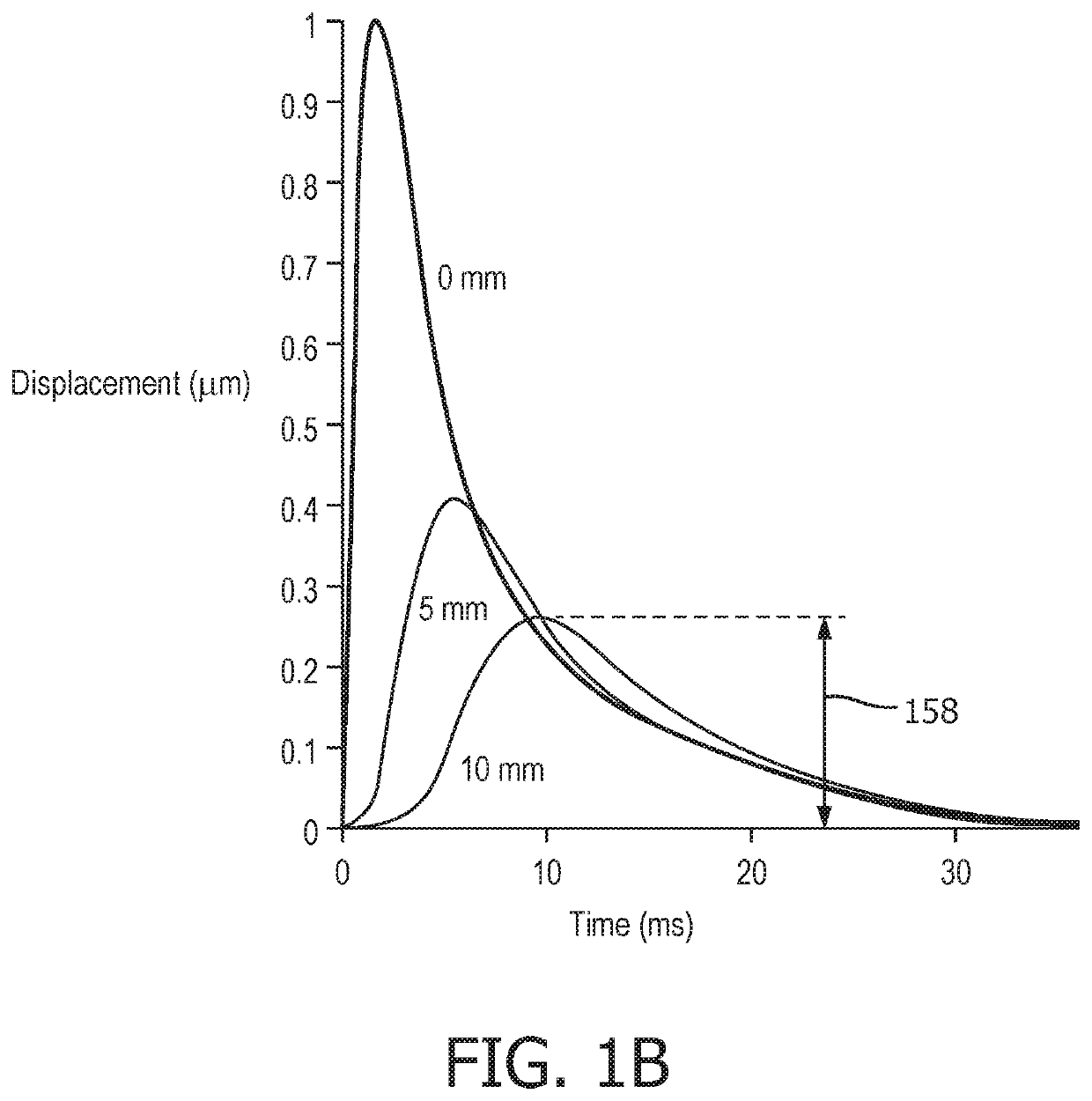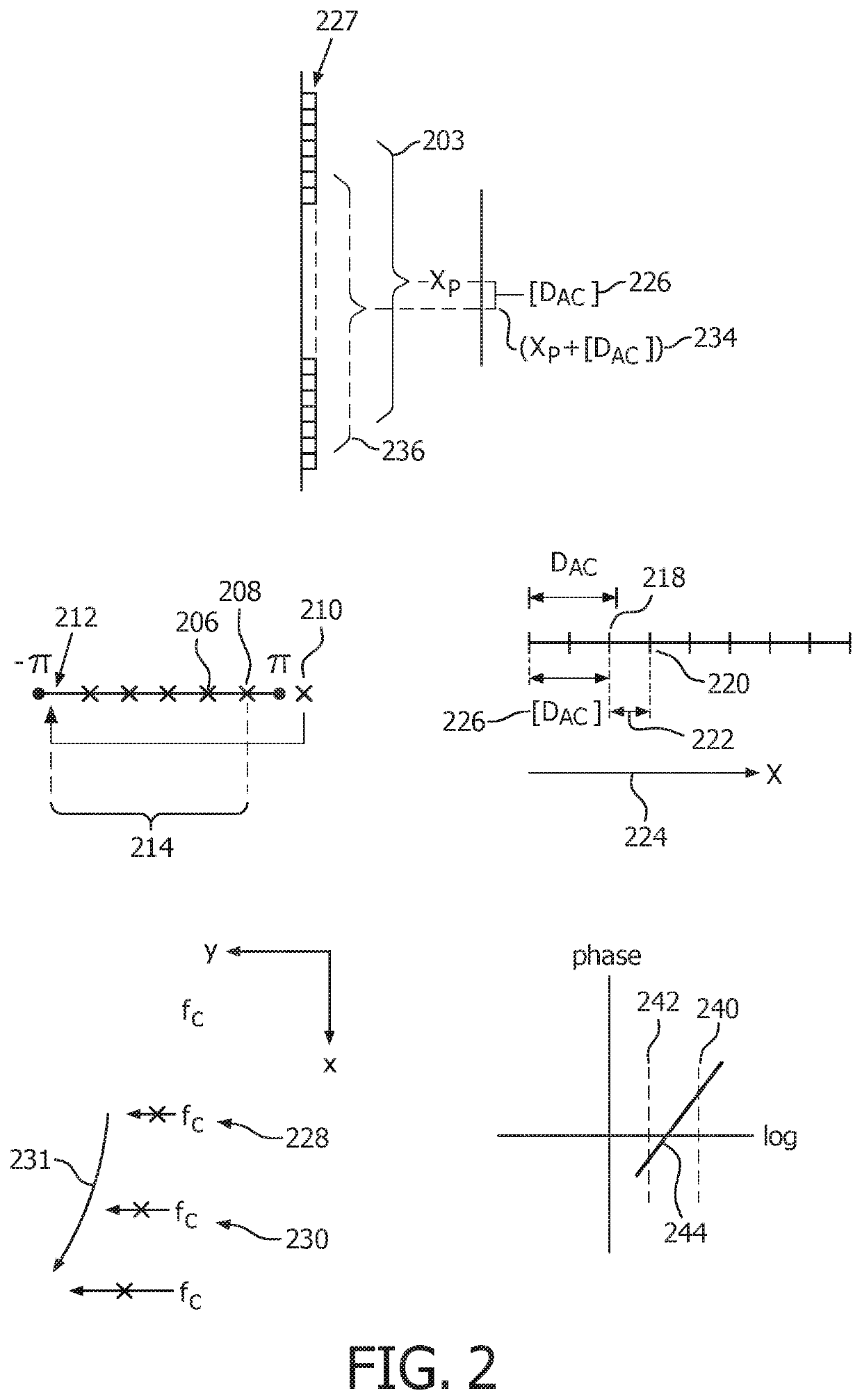Autocorrelation guided cross-correlation in ultrasound shear wave elastography
a cross-correlation and ultrasound technology, applied in the field of motion tracking, can solve the problems of missing the true peak affecting the accuracy of the cross-correlation function, so as to reduce the variance of displacement estimates and bias, accurate and efficient tracking of shear wave propagation, and high precision
- Summary
- Abstract
- Description
- Claims
- Application Information
AI Technical Summary
Benefits of technology
Problems solved by technology
Method used
Image
Examples
Embodiment Construction
[0021]FIG. 1A depicts, by illustrative and non-limitative example, an ultrasound motion-estimation device 100 usable for shear wave elastography in autocorrelation guided time-domain based motion tracking. The device 100 includes image acquisition circuitry 104, motion tracking circuitry 108, a controller 112, and data storage 116. The image acquisition circuitry is configured for spaced apart 120 image acquisition from respective lateral positions 124. The device 100 further includes multiple ultrasound imaging probes 128. The image acquisition is performed from respective acoustic windows 132. An acoustic window is the area on the imaging surface of the probe 128 that, in contact with the object or patient (human or animal) being examined, exchanges ultrasound used in imaging. In an axial direction 136, ultrasound pulses 140 are emitted, and radiofrequency (RF) data 144 is echoed back from the patient. The pulse 140 is dynamically echoed back from a number of imaging depths 148 be...
PUM
 Login to View More
Login to View More Abstract
Description
Claims
Application Information
 Login to View More
Login to View More - R&D
- Intellectual Property
- Life Sciences
- Materials
- Tech Scout
- Unparalleled Data Quality
- Higher Quality Content
- 60% Fewer Hallucinations
Browse by: Latest US Patents, China's latest patents, Technical Efficacy Thesaurus, Application Domain, Technology Topic, Popular Technical Reports.
© 2025 PatSnap. All rights reserved.Legal|Privacy policy|Modern Slavery Act Transparency Statement|Sitemap|About US| Contact US: help@patsnap.com



